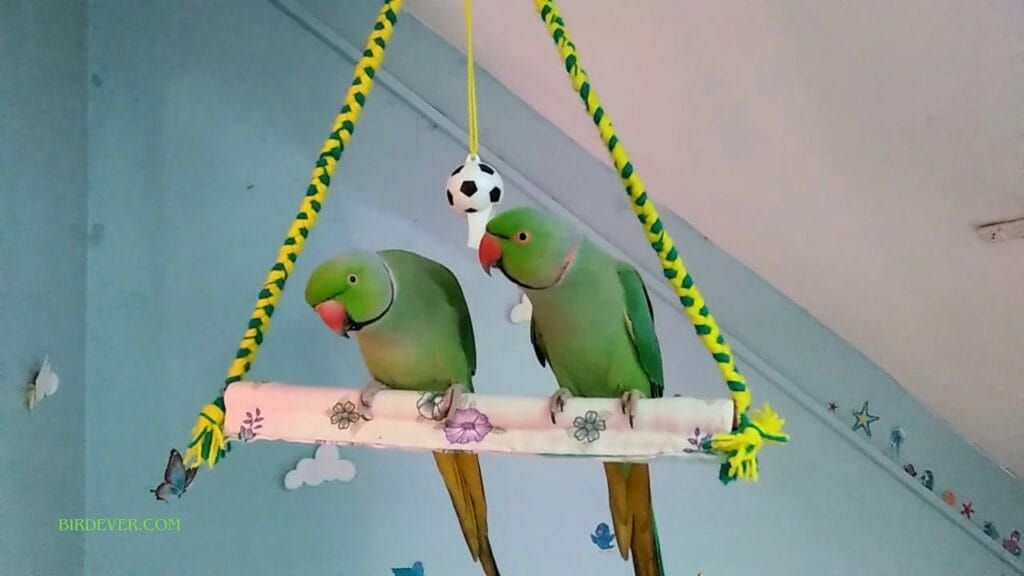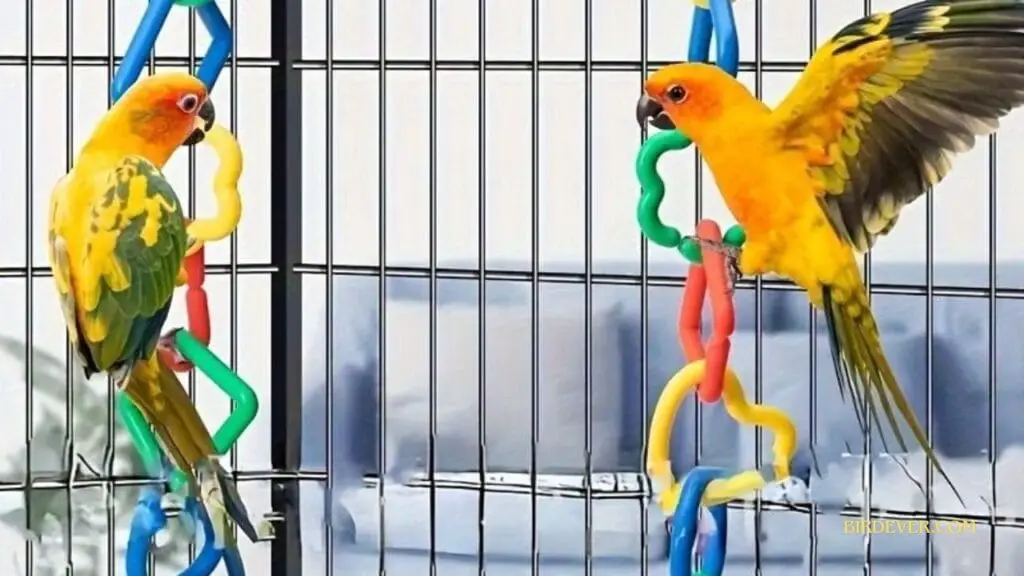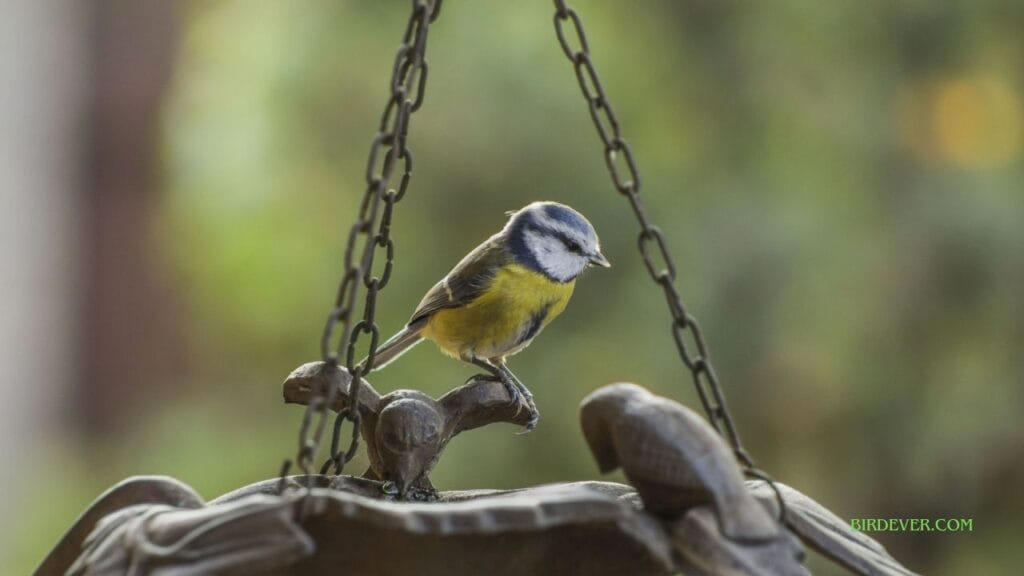How to Make a Bird Swing at Home?
Birds are known for their ability to fly, but did you know they also love to swing? If you’re a bird lover looking to add some extra fun and enrichment to your feathered friend’s life, but don’t know how to make a bird swing at home?
Birds need stimulation and entertainment to maintain a healthy and active lifestyle. Bird swings play a crucial role in promoting a healthy and happy life for your bird.
They help strengthen the bird’s muscles, especially the feet, and legs, while providing mental stimulation and preventing stress and anxiety. Bird swings also encourage natural instincts, prevent unhealthy behaviors, and promote social interaction with caretakers.
It’s a simple and inexpensive project that will provide hours of entertainment for your avian companion. In this blog post, we’ll show you step-by-step how to create a DIY bird swing using household materials. So grab your tools and get ready to swing into action!
Material Considerations for Bird Swings
When choosing materials for DIY bird swings, it is crucial to prioritize the bird’s safety and well-being. Opt for bird-safe materials like untreated wood or stainless steel.
Ensure the swing has a non-toxic coating to protect the bird from harmful chemicals. Use bird-safe wood like hardwood or fruit tree branches.
Avoid using softwoods or woods that have been treated with chemicals or pesticides, as they can be harmful to your bird’s health. Remember, natural and non-toxic materials are always the best choice for your feathered friend.
Designing And Creating Your Bird Swing

Customize your bird swing with different colors, shapes, and textures to suit their preferences. Designing the swing with multiple perches provides various levels of activity.
Decorate it with bird-safe toys, beads, or bells for extra stimulation. Adjustable heights accommodate the bird’s size and species, while removable parts allow for easy maintenance and cleaning.
Adapting the Design to Your Bird’s Size and Species
When designing a bird swing, it’s important to consider the size and species of your bird. Smaller birds like parakeets require thinner perches and narrower platforms, while larger birds such as parrots need thicker and more durable ones.
Climbing birds like cockatoos would benefit from additional ropes or ladders while ground-dwelling birds like finches prefer lower perches and platforms.
Birds with special needs like disabled or elderly birds should have swings that offer extra stability and support. Adapt the design to suit your bird’s specific requirements.
Tools Needed
To construct a bird swing, you’ll need basic woodworking tools like a saw, drill, and sandpaper. Ensure that the parts are securely attached with bird-safe glue. Use bird-safe hardware, such as stainless steel screws or hooks.
Measure the swing’s size with a ruler or measuring tape, and use a level to make sure it’s straight and balanced.
Step-by-Step Construction Process
To construct a bird swing, measure and cut the desired perch length to fit the bird’s cage. Drill holes in the perch for secure attachment, then sand away rough edges and splinters.
Use bird-safe glue or hardware to attach the swing and test its stability. Ensure it can withstand the bird’s weight and movements on the side of the perch.
Ensuring Safety and Comfort
Regularly inspect bird swings for wear, damage, or loose parts to ensure the bird’s safety. Ensure that the swing is appropriately sized, allowing the bird to perch comfortably without straining its feet.
Place the swing in a secure location, away from potential hazards or predators. Regularly clean the swing to prevent the buildup of bacteria or parasites. Replace the swing if it becomes worn, or damaged, or if the bird outgrows it.

Safety Measures to Consider
To ensure the safety of your bird on a swing, make sure it is securely attached to the birdcage or perch.
Choose a swing with bird-safe materials and regularly inspect it for wear or damage. Place the swing away from any hazards and provide a soft landing area below. Remember, safety comes first.
How to Make the Swing Comfortable for Your Bird?
To ensure your bird’s comfort, select a swing that suits their species. Provide a variety of textures like wood, rope, and beads for them to perch on.
Attach the swing at a reachable height and consider adding stimulating toys like bells or mirrors. Place it in a secure area with a good view and make sure to provide treats like foxtail millet to fulfill all the nutrition a bird needs.
Also Read: How to Make a Bird Carrier
How to Make a Bird Swing at Home: FAQs
What if My Bird Doesn’t Use the Swing?
If your bird doesn’t immediately take to the swing, be patient. Give them time to adjust and try placing their favorite treats or toys on the swing to encourage exploration.
Experiment with different types of swings and observe their behavior for any signs of fear or discomfort. If needed, consult a bird behavior expert or avian veterinarian for guidance.
How do I ensure the bird swing is safe for my bird?
Make sure the swing is made of bird-safe materials that are non-toxic and durable. Check for any sharp edges or loose parts that could potentially harm your bird.
It’s also important to choose a swing that is an appropriate size for your bird’s species and weight. Hang the swing securely in the cage, making sure it is stable and properly attached.
How do I hang a bird swing?
Find a sturdy branch or hook where you want to hang the swing. Second, attach the swing securely using a small carabiner or rope. And voila!
Your feathered friend now has a cozy perch to swing and chirp to their heart’s content. Just make sure to hang it at a height that is safe and comfortable for your bird. Happy swinging!
Can I add toys or decorations to the bird swing?
Sure, you can add toys or decorations to the bird swing! Just make sure they’re bird-approved and won’t cause any harm. After all, birds deserve a little extra pizzazz in their swing time too!
Conclusion

Making a bird swing is a simple and fun DIY project that can provide hours of entertainment for your feathered friends. By following the steps outlined in this blog, you can create a safe and comfortable swing that will keep your birds happy and active.
Whether you have a small budgie or a larger parrot, they will surely enjoy perching and swinging on their new homemade swing. So go ahead and give it a try! Your birds will thank you for it.
